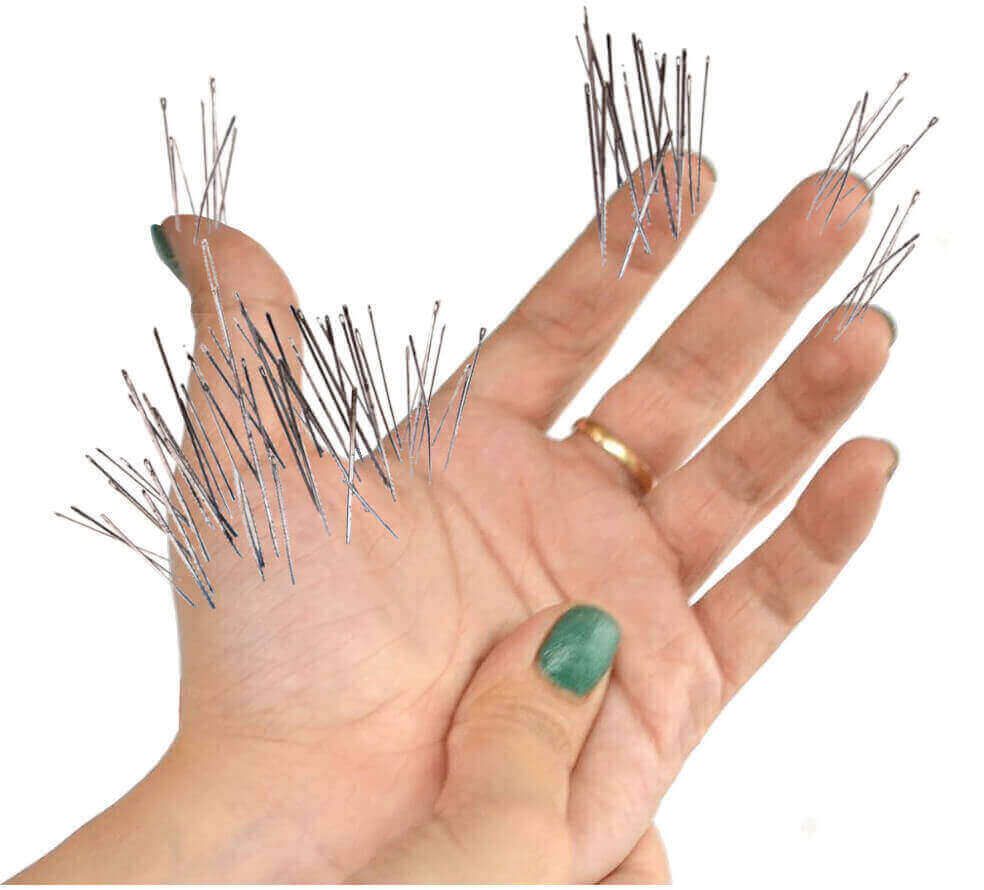Which Jobs are Causing Carpal Tunnel Syndrome?
Table of Contents
- Jobs most likely to cause carpal tunnel syndrome
- Carpal tunnel syndrome in the workforce
- Other amazing statistics about carpal tunnel syndrome
- Specific jobs causing carpal tunnel
- List of jobs
- How to get relief from carpal tunnel syndrome
- Summary
- FAQs
- About
Jobs most likely to cause carpal tunnel syndrome
According to the
Centers for Disease Control and Prevention (CDC), certain jobs are far more likely to cause carpal tunnel syndrome than others. Any occupation that requires
repetitive hand or wrist movement, or long periods of gripping tools or equipment, can put you at risk. Over time, those repeated motions can lead to inflammation and pressure on the median nerve—the root cause of carpal tunnel syndrome.
Think about a few examples: an office worker who types or uses a mouse for eight hours a day, a tailor who sews for long stretches, or a cook constantly stirring or kneading dough. Even a hair stylist who grips scissors and a comb all day can develop the pain, numbness, or tingling that signal carpal tunnel syndrome.
The CDC reports that
carpal tunnel syndrome is now the most common hand disorder in the United States—and the numbers keep rising every year. The good news is that knowing which jobs pose the greatest risk can help you take steps to prevent it. In this article, you’ll learn which professions are most affected and how simple adjustments can protect your hands from long-term damage.
Carpal tunnel syndrome in the workforce
The primary
carpal tunnel symptoms include hand or finger
pain,
numbness, tingling,
burning,
shooting electric shocks, and
weakness. Symptoms in the thumb are usually more pronounced. However, the little finger is not affected. Stressed tendons are the
cause carpal tunnel syndrome.
That's why doctors characterize carpal tunnel as a type of
repetitive strain injury or RSI. In fact, repetitive hand activity is the common thread among jobs causing carpal tunnel syndrome.
Certain harmful hand activities like repetitive, rapid, and forceful motions (like constant grip-and-release) seem to be the key to causing this condition.
The
US Bureau of Labor Statistics reports additional surprising data:
- The lifetime risk
of developing carpal tunnel syndrome is about 10% of adults.
- It's equally high for another commonly seen RSI;
wrist tendonitis.
- Together, these “musculoskeletal disorders” account for
70% of all occupational illnesses.
- Carpal tunnel syndrome is the fourth most often diagnosis condition.
- It is
also one of the most commonly
misdiagnosed disorders.
- Carpal tunnel release surgery is the
second most performed surgery
in the USA (back surgery is #1).
- Over 4.8 million people have a
new diagnosis of carpal tunnel syndrome every year. (This assumes a US working population of 160 million.)
Other amazing statistics about carpal tunnel syndrome
Specific jobs causing carpal tunnel
The
Occupational Health and Safety Administration(OSHA) says the problem of carpal tunnel syndrome is on a steep rise. Certain occupations have a
higher risk of causing hand pain and are more prone to have employees lose job time. OSHA lists these jobs (with the hand tasks that cause the problem) below.
According to OSHA, the most common jobs causing carpal tunnel syndrome are telephone operators, cafeteria attendants (including food and coffee shop counter), and electrical or electronics assemblers. Also the association between
hair stylists & carpal tunnel is practically a
bad joke
within the hair styling industry.
The other jobs listed below (including the
harmful tasks these professionals are require to perform) have similar characteristics. All of these workers engage in rapid, forceful and repetitive hand or finger activities.
List of jobs
- Garment worker, sewer, stitcher – Grasping and tugging fabric.
- Assembly line worker – Handling objects on conveyor belts.
- Mechanic – Using ratchet, screwdriver, power tools.
- Professional gardener – Hand weeding, power tools.
- House Painter – Using spray guns.
- Truck driver
- holding the steering wheel.
- Clerical worker/clerk
– Keyboarding, using mouse, filing.
- Secretary
– Keyboarding, using mouse.
- Farmer
– Milking cows, handling equipment.
- Homemaker
– Knitting, sewing, infant handling.
- Janitor
– Scrubbing surfaces.
- Meat packer/butcher/poultry – Cutting, using knives.
- Sonographers
– Using electronic devices.
- Radiologists
– Keyboarding, mouse use.
- Massage therapists – Forceful hand motions.
- Musician
(especially
guitar
& piano) – Playing stringed instrument, bow use, keyboard.
- Cashier
– Using laser scanner.
- Electronic industry worker – Assembling small parts.
- Locksmith
– Turning keys, using hand tools.
- Agricultural worker, factory worker
– Wearing poor fitting gloves.
- Carpenter
– Hand tools, power tools, lifting.
How to get relief from carpal tunnel syndrome
Summary
The CDC and OSHA publish the most common jobs causing carpal tunnel syndrome. Chief among them are cooks, tailors, assembly line workers, office workers, and hair stylists. You can avoid getting this painful condition by taking preventive measures. And if symptoms do occur, try treating them using nonsurgical remedies before considering surgery.
FAQs
If I get carpal tunnel on the job, does my insurance cover treatment?
Carpal tunnel syndrome can be considered a work-related injury in most cases. Check with your insurance carrier for details.
If I'm unable to use my hands due to carpal tunnel, what happens to my business?
First you should try every treatment available. This includes nonsurgical and surgical options. If they fail, then you need to make the hard decision about deciding between having hand pain or continuing with your work.
Will carpal tunnel just go away?
Mild stage cases might spontaneously disappear, especially if you rest frequently and stretch your hand and fingers often. Moderate and severe stage cases are less likely to disappear on their own.
About






